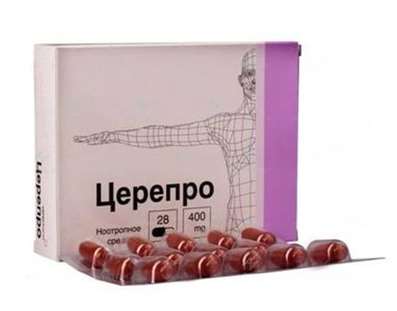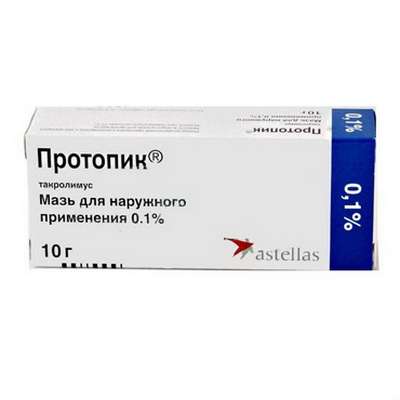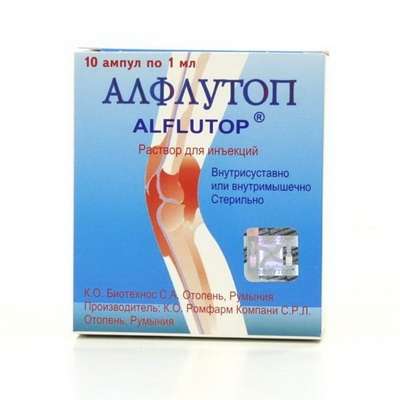Instruction for use: Laquinimod
I want this, give me price
Trade name of the drug – Nerventra
The Latin name of the substance Laquinimod
Laquinimodum (genus. Laquinimodi)
Chemical name
5-Chloro-N-ethyl-4-hydroxy-1-methyl-2-oxo-N-phenyl-1,2-dihydroquinoline-3-carboxamide (and as sodium salt)
Gross Formula
C19H17ClN2O3
Pharmacological group:
Other immunomodulators
The nosological classification (ICD-10)
G35 Multiple Sclerosis: Disseminated Sclerosis; Multiple sclerosis; Recurrent multiple sclerosis; Secondary-progressive multiple sclerosis; Exacerbation of multiple sclerosis; Mixed forms of multiple sclerosis
CAS code
248282-07-7
Characteristics of the substance Laquinimod
Immunomodulator with protective effect in relation to the central nervous system, intended for oral treatment of multiple sclerosis.
Pharmacology
Pharmacological action - immunomodulating.
Immunomodulator, which has a protective effect in relation to the central nervous system.
The mechanism of action of laquinimod is not fully understood, however, several directions of its activity have been revealed. In particular, laquinimod has a modulating effect on the immune system, it penetrates the BBB and has a direct effect on the cells of the central nervous system, not having a common immunosuppressive effect. In experimental models, this was manifested in a decrease in demyelination and a decrease in the number of axons.
The efficacy of laquinimod, established in patients with relapsing-remitting multiple sclerosis, was expressed in decreasing the activity of the disease, reducing atrophic processes in the brain, reducing the risk of recurrence of the disease and the number of relapses confirmed by MRI with contrasting focal lesions with gadolinium, as well as slowing the progression Disability of patients.
Pharmacokinetics
The pharmacokinetic profile of laquinimod is characterized by high bioavailability, a high degree of binding to plasma proteins (more than 98%), low clearance (0.09 l / h), low Vd (about 10 L), long terminal T1 / 2 (about 80 h). The pharmacokinetics of laquinimod is linear in therapeutic doses from 0.05 to 0.24 mg / day. When applied once a day Laquinimod reaches equilibrium concentrations within 14 days. Variations in the concentration when applied once a day are insignificant (about 30%).
Absorption
When administered, the absolute bioavailability of laquinimod is about 90%. When taken on an empty stomach, absorption is rapid, and Cmax in plasma is reached within 1 hour after administration. With simultaneous intake of fat high-calorie food, Tmax increases by 5 hours, Cmax by 30%, AUC by 10%.
Distribution
VSS laquinimod is dose independent and is about 10 liters. Laquinimod reversibly binds to blood plasma proteins, mainly with serum albumin. The binding of e plasma proteins is 98%.
Metabolism
The system clearance of Laquinimod is low, about 0.09 l / h. Since laquinimod does not bind to erythrocytes, its clearance when administered is 0.16 l / h (plasma clearance / 0.6), which corresponds to 0.2% of the hepatic blood flow.
The main ways of metabolizing laquinimod are the hydroxylation of 6-, 8-quinoline and the N-demethylation of the quinoline ring, mainly with the participation of the CYP3A4 isoenzyme. Metabolites, the concentration of which is less than 1% after the administration of laquinimod, is not pharmacologically active.
Excretion
Laquinimod is excreted by the kidneys and bile mainly in the form of metabolites. Clinical studies have established that approximately 79% of the dose is excreted within 14 days by the kidneys (51%) and the intestine (28%). About 3.5% of the Laquinimod is excreted unchanged. The final T1 / 2 is about 80 hours.
Pharmacokinetics in special clinical cases
In patients with moderate renal insufficiency (Cl creatinine 30-59 ml / min / 1.73 m2) with laquinimod at a dose of 0.6 mg Cmax did not differ from the values in healthy volunteers, AUC increased by 1.4 times.
The pharmacokinetics of laquinimod in patients with severe renal insufficiency (Cl creatinine <30 ml / min / 1.73 m2) has not been studied, therefore, the use of laquinimod in this group of patients is not recommended.
In patients with mild to moderate hepatic insufficiency (class A and B on the Child-Pugh scale), when taking laquinimod at a dose of 0.6 mg Cmax did not differ from the values in healthy volunteers, the AUC increased by 1.2 and 2.3 times, respectively .
Pharmacokinetics in patients with severe hepatic insufficiency (class C on the Child-Pugh scale) has not been studied, therefore, the use of laquinimod in this group of patients is not recommended.
Application of substance Laquinimod
Recurrent-remitting multiple sclerosis.
Contraindications
Hypersensitivity to Laquinimod, severe hepatic insufficiency (class C on the Child-Pugh scale), severe renal failure (Cl creatinine <30 ml / min / 1.73m2), simultaneous application with inductors of the isozyme CYP3A4 - carbamazepine, efavirenz, phenobarbital, phenytoin, rifabutin , Rifampicin; Pregnancy, the period of breastfeeding, children under 18 years.
Restrictions
Elderly patients, concurrent use with potent (itraconazole, ketoconazole, posaconazole, voriconazole, clarithromycin, erythromycin, telithromycin) or moderate (fluconazole, diltiazem, verapamil) inhibitors of the CYP3A4 isoenzyme, mild and moderate hepatic insufficiency, mild and moderate renal failure.
Application in pregnancy and breastfeeding
The use of laquinimod during pregnancy and during breastfeeding is contraindicated (insufficient data on safety and efficacy). Women of childbearing age should use reliable contraceptive methods both during the Laquinimod therapy and for 4 weeks after it is completed.
Side effects of the substance Laquinimod
The most common adverse reactions with laquinimod therapy were headache (19.1%), back pain / neck (14.6%), abdominal pain (10.3%). Back pain / neck, as well as an increase in hepatic transaminase activity (4.7%) were identified as safety markers.
The undesirable reactions presented below were identified during phase III clinical trials. The frequency of adverse reactions is classified according to WHO recommendations: very often - not less than 10%; Often - not less than 1% but less than 10%; Infrequently - not less than 0.1% but less than 1%; Rarely - not less than 0.01% but less than 0.1%; Very rarely (including isolated cases) - less than 0.01%.
On the part of the blood and lymphatic system: often - anemia.
From the side of the central nervous system: very often - headache; Often - an alarm.
From the digestive tract: very often - pain in the abdomen; Often - constipation, lesions of teeth and gums, bloating; Infrequent - dryness of the oral mucosa.
On the part of the liver and biliary tract: often - increased activity of liver transaminases (ALT, GGT, ACT).
From the respiratory system: often - cough; Infrequently - bronchospasm.
From the skin and subcutaneous tissues: often - infectious skin lesions.
From the musculoskeletal and connective tissue: very often - back pain / neck; Often - arthralgia; Infrequently bursitis.
From the side of the kidneys and urinary tract: often - urinary tract infections; Infrequent - sudden urge to urinate.
On the part of the reproductive system and mammary glands: often - a violation of the menstrual cycle, uterine bleeding.
Other: often - peripheral edema, increased fibrinogen concentration, increased serum amylase activity.
In placebo-controlled studies, back pain / neck pain was noted in 14.6% of patients receiving laquinimod at a dose of 0.6 mg, and in 8.3% of patients receiving placebo. Severe pain was noted in 0.7% of patients receiving Laquinimod, and in 0.5% of patients receiving placebo.
In three cases of back pain with the use of laquinimod, they have been described as serious adverse reactions. The condition of the two patients improved after symptomatic therapy, the third patient required fixation therapy at the level of L5-S1. All patients continued to participate in the study.
The Budda-Chiari syndrome was recorded once in a patient with a coagulation factor V.
In clinical trials, an increase in hepatic transaminase activity was noted in 9.3% of patients receiving laquinimod therapy, compared with 5.3% in the control group.
A clinically significant increase in hepatic enzyme activity (3-fold higher than UGN) was noted in 4.7% of patients receiving laquinimod therapy, more often in men. In 74% of patients the activity of hepatic enzymes decreased independently, despite the continued therapy. There was no concomitant increase in the concentration of total or direct bilirubin, no signs of hepatic insufficiency were noted.
Despite minor deviations in hemoglobin from normal, there is no direct correlation between the decrease in hemoglobin concentration in patients taking Laquinimod.
Interaction
The metabolism of Laquinimod is carried out mainly with the participation of the isoenzyme CYP3A4.
With the simultaneous use of lachinimod and powerful (eg itraconazole, ketoconazole, posaconazole, voriconazole, clarithromycin, erythromycin, telithromycin) or moderate (eg fluconazole, diltiazem, verapamil) inhibitors of the isoenzyme CYP3A4, the AUC of Laquinimod can increase. Avoid long (more than 1 month) use of such combinations.
Separate interactions with inhibitors of the isoenzyme CYP3A4:
- with simultaneous application with ketoconazole at a dose of 400 mg / day for 28 days in healthy volunteers, the AUC of Laquinimod increased 3.1 times without changing the C max index;
- with simultaneous application with fluconazole at a dose of 200 mg / day for 21 days in healthy volunteers, the AUC of Laquinimod increased 2.5-fold without changing the C max;
- with concomitant use with cimetidine at a dose of 1600 mg / day for 21 days in healthy volunteers, AUC and Cmax did not change.
If Laquinimod is used with CYP3A4 isoenzyme inducers (eg carbamazepine, efavirenz, phenobarbital, phenytoin, rifabutin, rifampicin), the concentration of the Laquinimod and, as a consequence, its effectiveness may be reduced, therefore, the use of these combinations is not recommended.
Separate interactions with inducers of the isoenzyme CYP3A4:
- with simultaneous use with rifampicin at a dose of 600 mg / day for 21 days in healthy volunteers, the AUC of Laquinimod decreased 5-fold without changing the C max index.
Interaction with other drugs
Substrates of the isoenzyme CYP1A2. With simultaneous use of caffeine with repeated doses of Laquinimod (0.6 mg) in healthy volunteers, AUC and C max of caffeine decreased by 5 and 2 times, respectively. Laquinimod is a powerful inducer of the isoenzyme CYP1A2 and can lead to a marked decrease in the concentration in the blood plasma of the drug, which is metabolized by the action of this isoenzyme. When using Laquinimod with CYP1A2 isoenzyme substrates with a narrow therapeutic index (for example, ropinirole, clozapine, theophylline), it is necessary to adjust the dose of CYP1A2 isoenzyme substrates and monitor the clinical state of the patient at the beginning of the application or when the Laquinimod is canceled. At the beginning of the application of Laquinimod in this combination, it is necessary to increase the dose of substrates of the isoenzyme CYP1A2 in order to maintain their effectiveness. With the cancellation of Laquinimod, the dose of the CYP1A2 isoenzyme substrates should be reduced to prevent an overdose that can lead to the development of serious adverse reactions on the substrate side of the CYP1A2 isoenzyme.
Substrates of isoenzyme CYP3A4. At simultaneous application of repeated doses of Laquinimod (0.6 mg) with midazolam in healthy volunteers, an increase in midazolam AUC was observed approximately 1.5-fold without changing the C max of midazolam.
Laquinimod is a weak inhibitor of the CYP3A4 isoenzyme, which should be considered when used concomitantly with drugs with a narrow therapeutic index.
Overdose
In the course of clinical studies, there was no evidence of an overdose of laquinimod. When taking a dose exceeding the recommended dose 4 times (2.4 mg / day), the safety profile remained similar to the safety profile in patients taking the recommended dose.
Treatment: symptomatic therapy.
Routes of administration
Inside.
Precautions for the substance Laquinimod
The use of Laquinimod may be accompanied by a slight, asymptomatic increase in hepatic transaminase activity (ALT, GGT, ACT), which can usually occur during the first 6 months of treatment. Return to the initial level of activity usually occurs within 3 months with continued treatment.
In patients with severe hepatic insufficiency (class C on the Child-Pugh scale), the use of Laquinimod is contraindicated.
In patients with severe renal failure (Cl creatinine <30 ml / min / 1.73 m2), the use of Laquinimod is contraindicated.
Laquinimod is a powerful inducer of the CYP1A2 isoenzyme of the cytochrome P450 system and simultaneous use with drugs metabolized by the CYP1A2 isoenzyme can lead to a marked decrease in their plasma concentration.
If Laquinimod is used simultaneously with substrates of the CYP1A2 isoenzyme with a narrow therapeutic index, dose adjustment and careful clinical observation of the patient at the beginning of treatment with Laquinimod or with its cancellation may be required. At the beginning of Laquinimod treatment, the dose of the CYP1A2 isoenzyme substrate may need to be increased to maintain its effectiveness. With the withdrawal of Laquinimod, the dose of the substrate of the isoenzyme CYP1A2 should be reduced in order to prevent overdose and, as a consequence, the development of serious adverse reactions (see "Interaction").
With the simultaneous use of Laquinimod and powerful or moderate inhibitors of the CYP3A4 isoenzyme, the Laquinimod AUC may increase. It is necessary to avoid prolonged (more than 1 month) simultaneous application of Laquinimod and powerful or moderate inhibitors of the CYP3A4 isoenzyme (see "Interaction").
With the simultaneous use of Laquinimod with inducers of the isoenzyme CYP3A4, the concentration of Laquinimod in the blood plasma and its effectiveness may decrease. It is not recommended simultaneous application of Laquinimod with inducers of the isoenzyme CYP3A4 (see "Interaction").
In the early period after the initiation of treatment with Laquinimod, an asymptomatic decrease in the concentration of hemoglobin, usually of a transient nature, without requiring the discontinuation of Laquinimod or the use of anti-anemic therapy, can be noted.
Influence on the ability to drive vehicles and mechanisms. Special studies were not conducted. However, in case of development of undesirable reactions from the side of the central nervous system, care should be taken when performing actions requiring an increased concentration of attention and speed of psychomotor reactions.

 Cart
Cart





